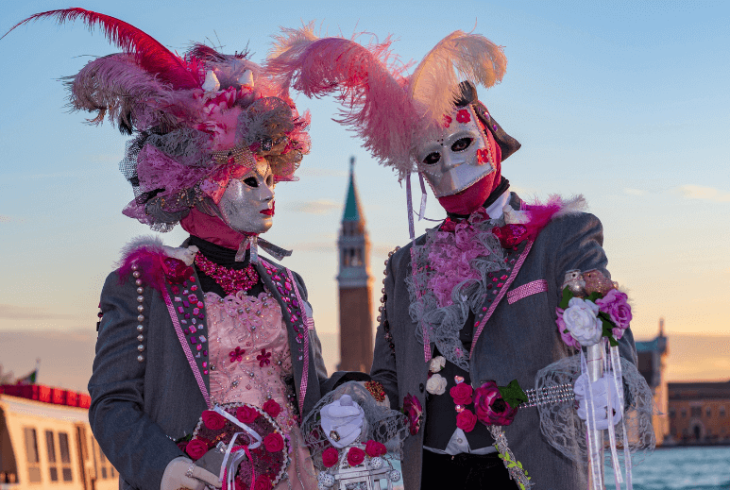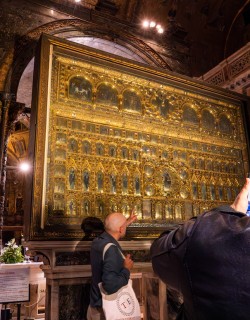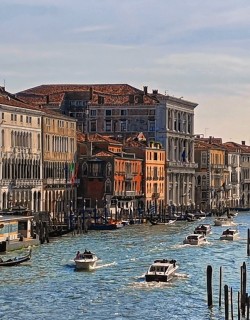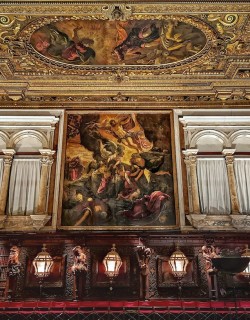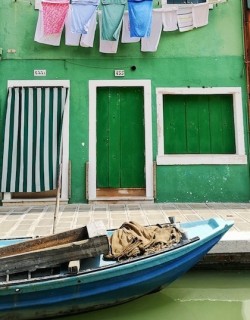Nothing heralds the passing of winter like the Venetian Carnival, and for curious travellers the spectacular annual celebration of the city’s special spirit is a must-see.
Every Spring people from across the globe descend on the floating city to take part in this unique celebration, a joyous riot of colour, sound and spectacle. Extraordinary costumes, elaborate masks and fascinating historical re-enactments all make Venice's two-week long party an unforgettable experience.
But what do you really know about Carnival? How has the festival evolved through history and what are the centuries-old traditions that bring it to life? In a word, what is Carnival behind the mask? Find out with our Q and A!
When is Venice’s Carnevale?
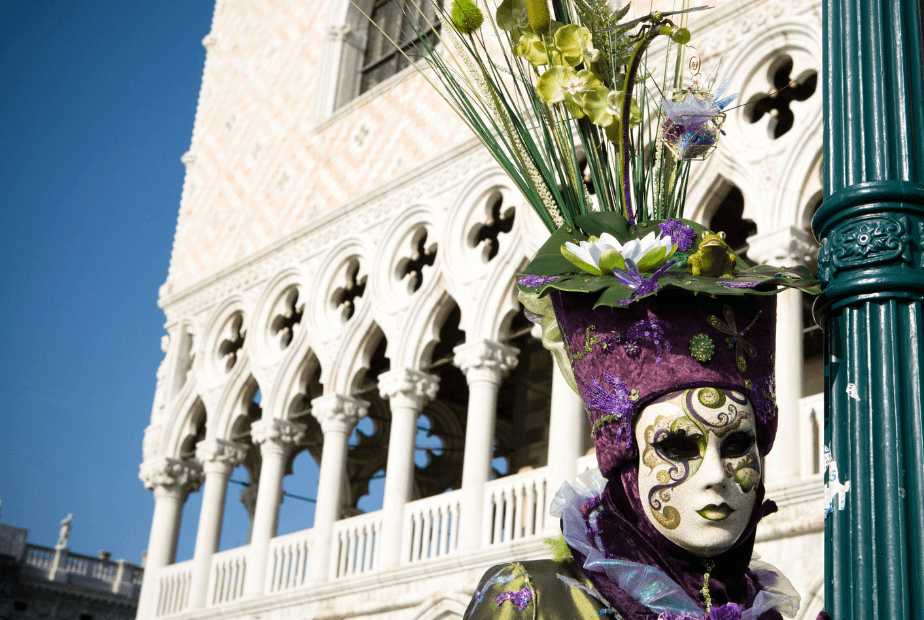
The Carnival is celebrated in the two weeks leading up to the beginning of Lent, the 40 days of fasting and penance that precedes Easter Week. In 2023 the festival will take place from Saturday February 4th with the opening parade down the grand canal to Tuesday February 21st (Fat Tuesday) with the conclusion of the Festa delle Marie.
How did the Carnival tradition begin?
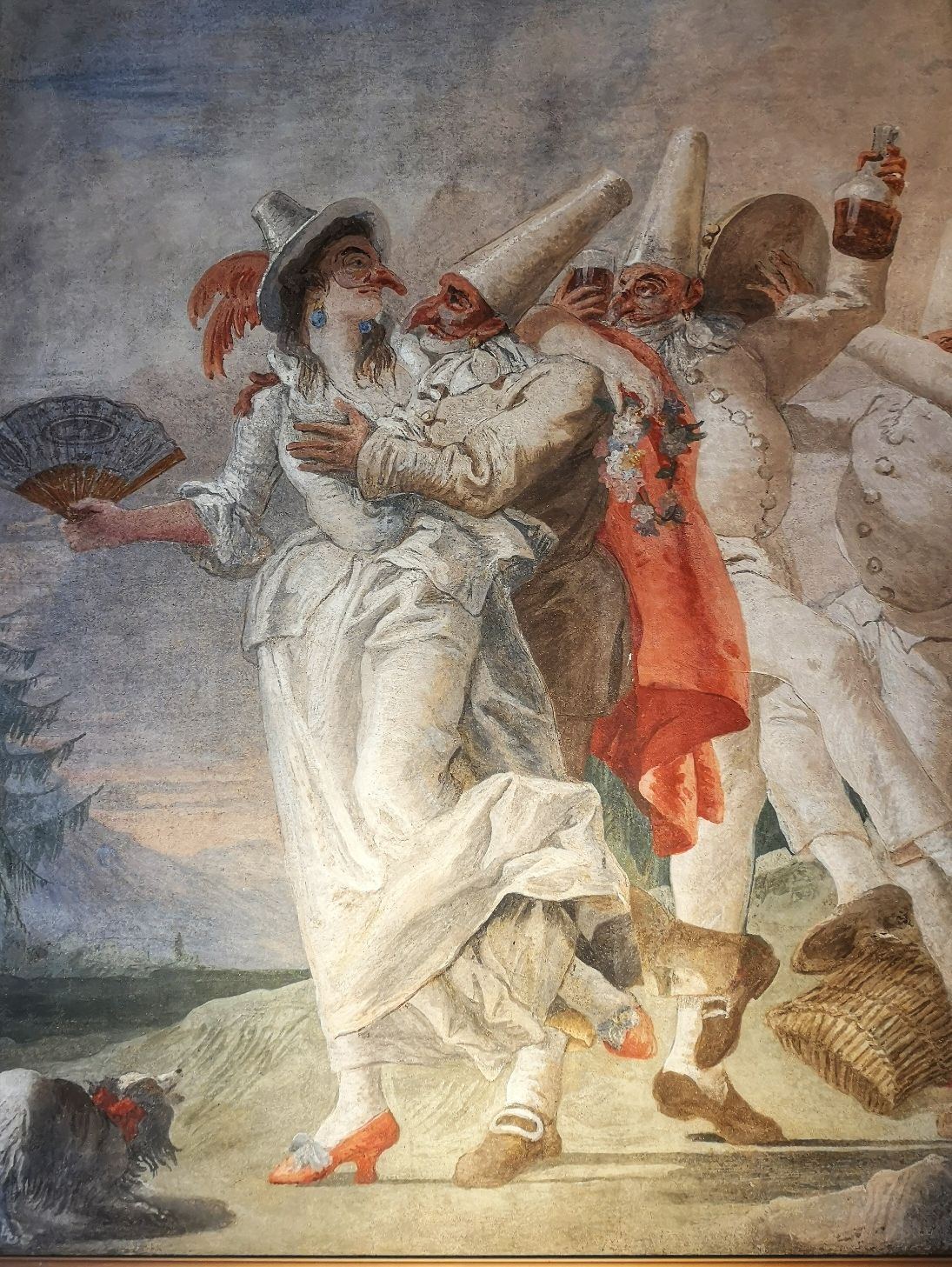
The tradition of Carnival is directly related to Lent. This is the period of religious obligation leading up to Easter when Christian communities were historically expected to follow strict dietary guidelines in imitation of the 40 days and 40 nights that Christ spent fasting in the desert and resisting the Devil's temptations as recounted in the Gospels.
The observance of Lent is recorded in Early Christian sources, and is described as a universally practised period of fasting preceding the celebration of Easter by the 4th century AD. Rich foods were off the menu for the duration, meaning that all manner of fats, sweets, meat and alcohol could not be consumed. In order to rid their pantries of these foodstuffs before Lent began, banquets and parties frequently preceded the period of gastronomic denial. This is why the last day before Lent is known as 'Mardi Gras' or 'Far Tuesday.'
Venice’s carnival is traditionally considered to date back to the year 1162, when the city threw an impromptu party in Saint Mark’s Square to celebrate a glorious military victory over the rival patriarchate of Aquileia. This party soon became a regular event in Venice that coincided with the pre-Lenten festivities. The popularity of the Venice Carnival grew steadily over the centuries, and by the 16th century had become one of the most unmissable events on the social calendar of Baroque Europe for the era’s pleasure-seeking aristocratic classes. The Carnival was outlawed for excessive licentiousness by the Austrian Emperor Francis II in 1797 and only revived in the 1970s, from which time it has grown from strength to strength once again.
What’s the story with carnival masks?
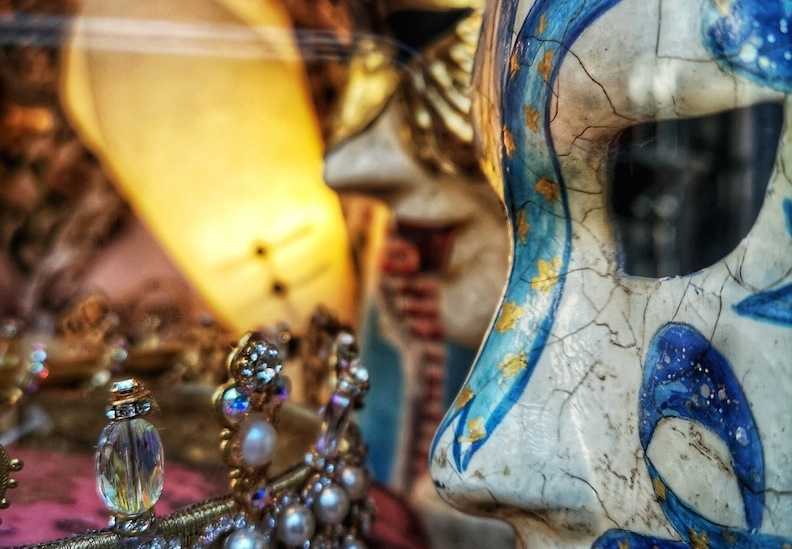
The origins of the Venetian penchant for wearing masks and disguises during Carnival are shrouded in mystery, but it has been convincingly argued that the practice is a sociological response to the strict class hierarchies and social structures that governed Venice in the Early-Modern period. These days masks are the preserve of the legions of revellers who descend on the Floating City each Spring, but they weren’t always confined to the Carnival.
Indeed, the luxury loving Venetians became so fond of the anonymity the masks gave them that they wore them whenever they could, facilitating secret trysts and gender bending parties, trips to the brothel and the gambling house.
Initially their use was permitted between St. Stephen’s Day on December 26th and Shrove Tuesday, when sumptuary laws banning lavish dress were suspended, but the rules were elastic and the periods during which wearing masks was allowed increased dramatically over time. Masks became so ubiquitous that they even had an official function in affairs of state, allowing votes, trials and ballots to be undertaken anonymously.
What are the different kinds of masks worn during the Venice Carnival?
You’ll encounter a bewildering variety of masks on show when you come to the Venice Carnival, but certain typologies recur again and again. From the relatively simple masks that were widely worn during carnival in the past to more elaborate attire that derives primarily from the commedia dell’arte tradition, these are the main types of masks to look out for.
Bauta
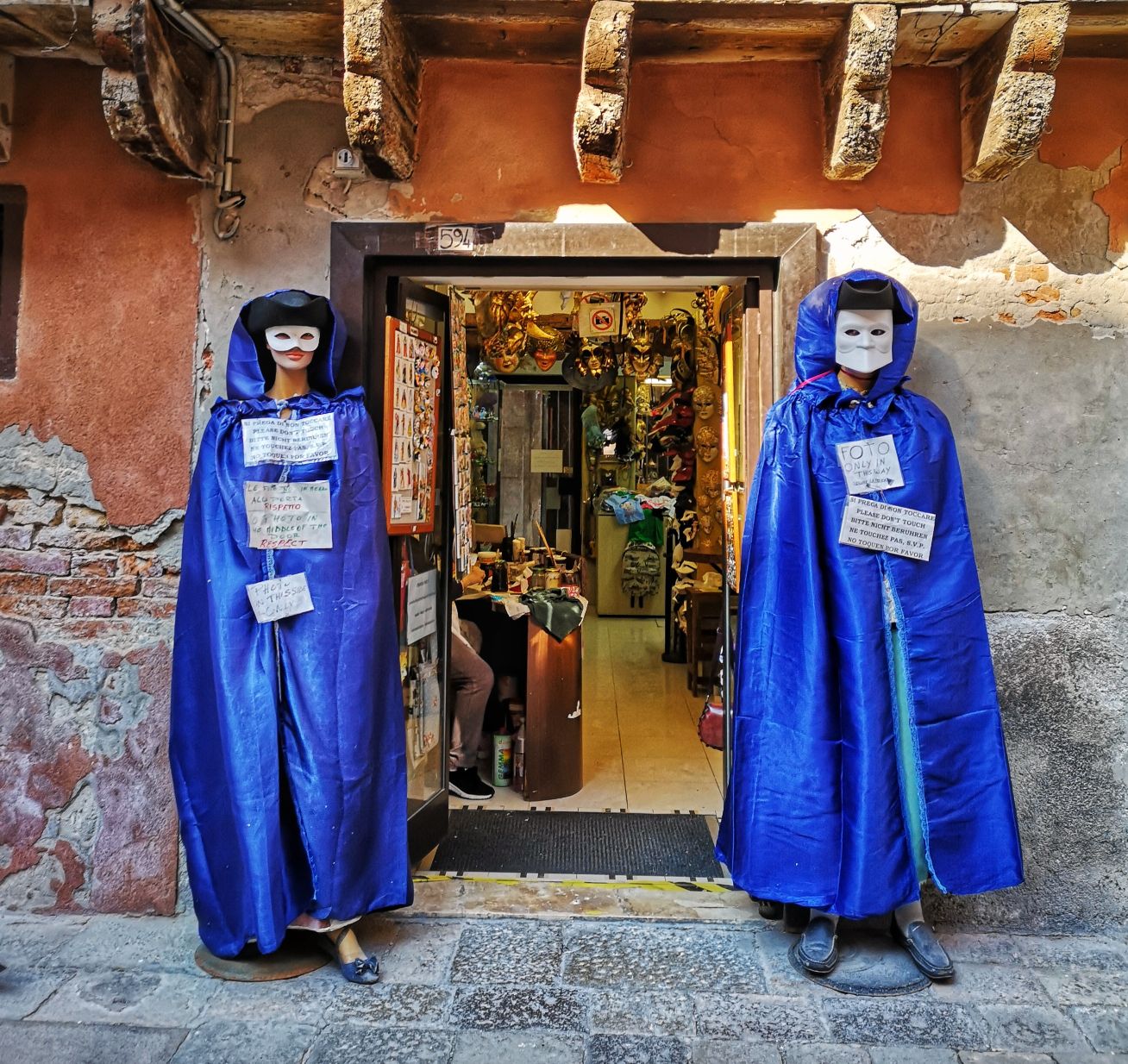
This simple white mask featuring a large nose, strong jaw and no mouth is one of the most well-known types of Venetian masks, traditionally worn with a black cape known as a tabarro and a tricorn hat. The bauta was the most common type of mask worn in the early-modern Carnival, and was also worn by members of Venetian councils during votes when anonymity had to be maintained.
Colombina
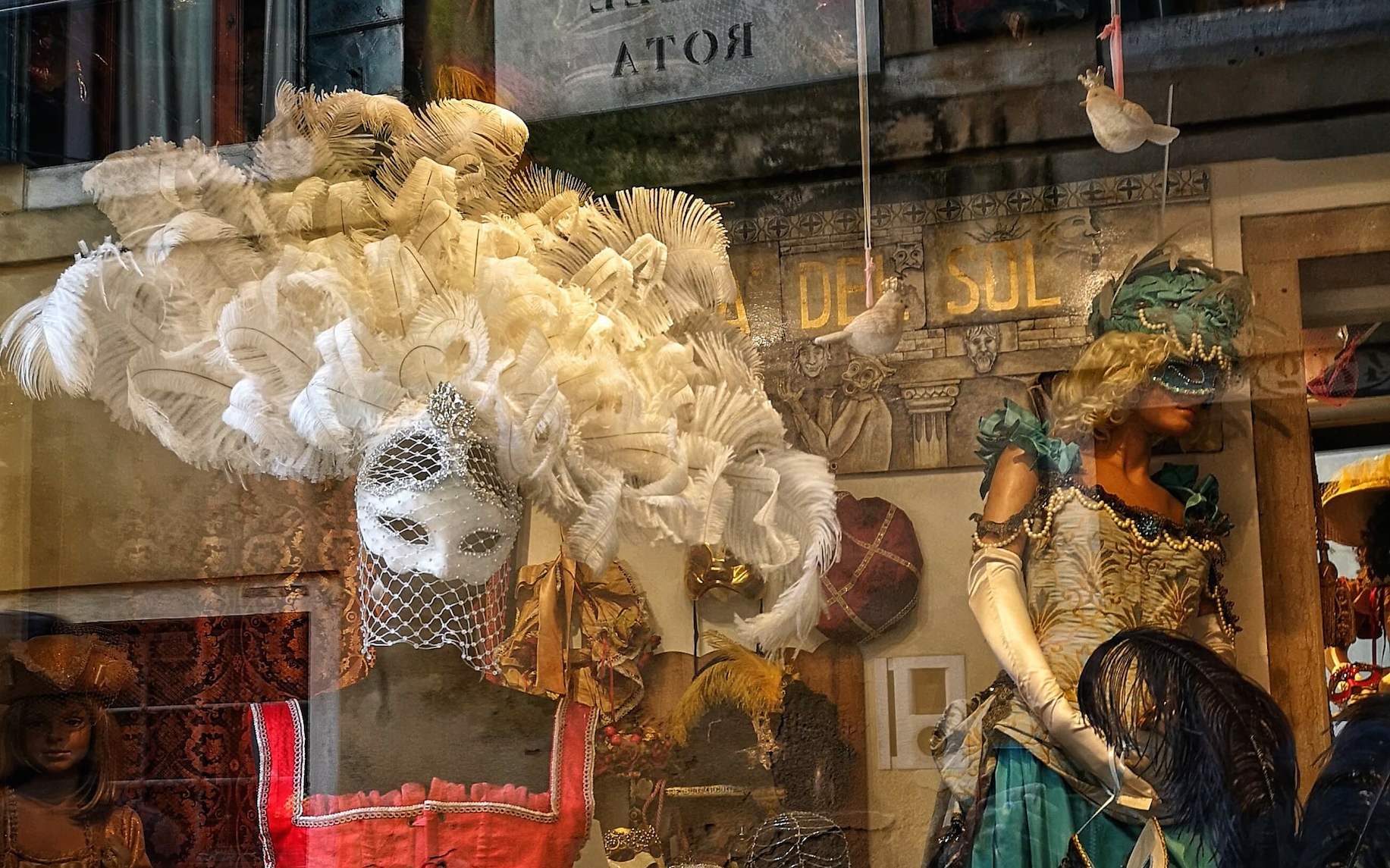
The colombina is a half-length mask that covers only the wearer’s eyes and nose, usually richly adorned on the cheeks with coloured stones and feathers. The mask is named after a female character in the commedia dell’arte tradition and is historically worn primarily by women. The story goes that an actress performing the role considered herself to be too beautiful to cover her face entirely, and this half-length mask was created just for her as a compromise.
Medico della Peste
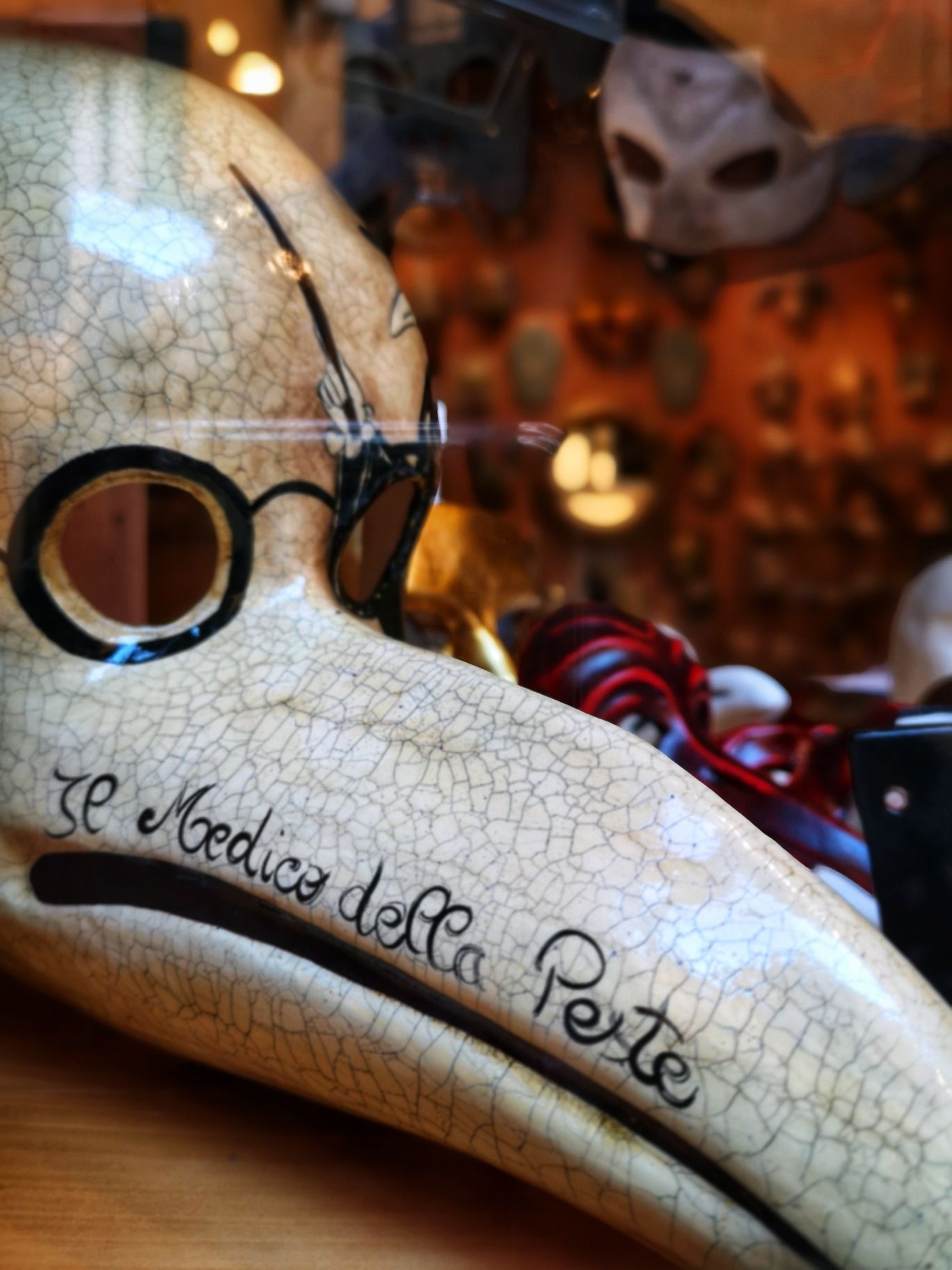
With its long beak and wide, staring eyes, the Plague Doctor mask is one of the most characteristic and striking sights you’ll encounter at the Carnival. The form of the mask was invented by 17th-century French doctor Charles de Lorme, who came up with it as part of a medical costume to be worn whilst treating plague victims (think of it as an early and somewhat ineffective form of PPE). Its use as a carnival mask is not historical, and dates from the revival of the festival in the 1980s.
Where can I purchase a great carnival mask in Venice?
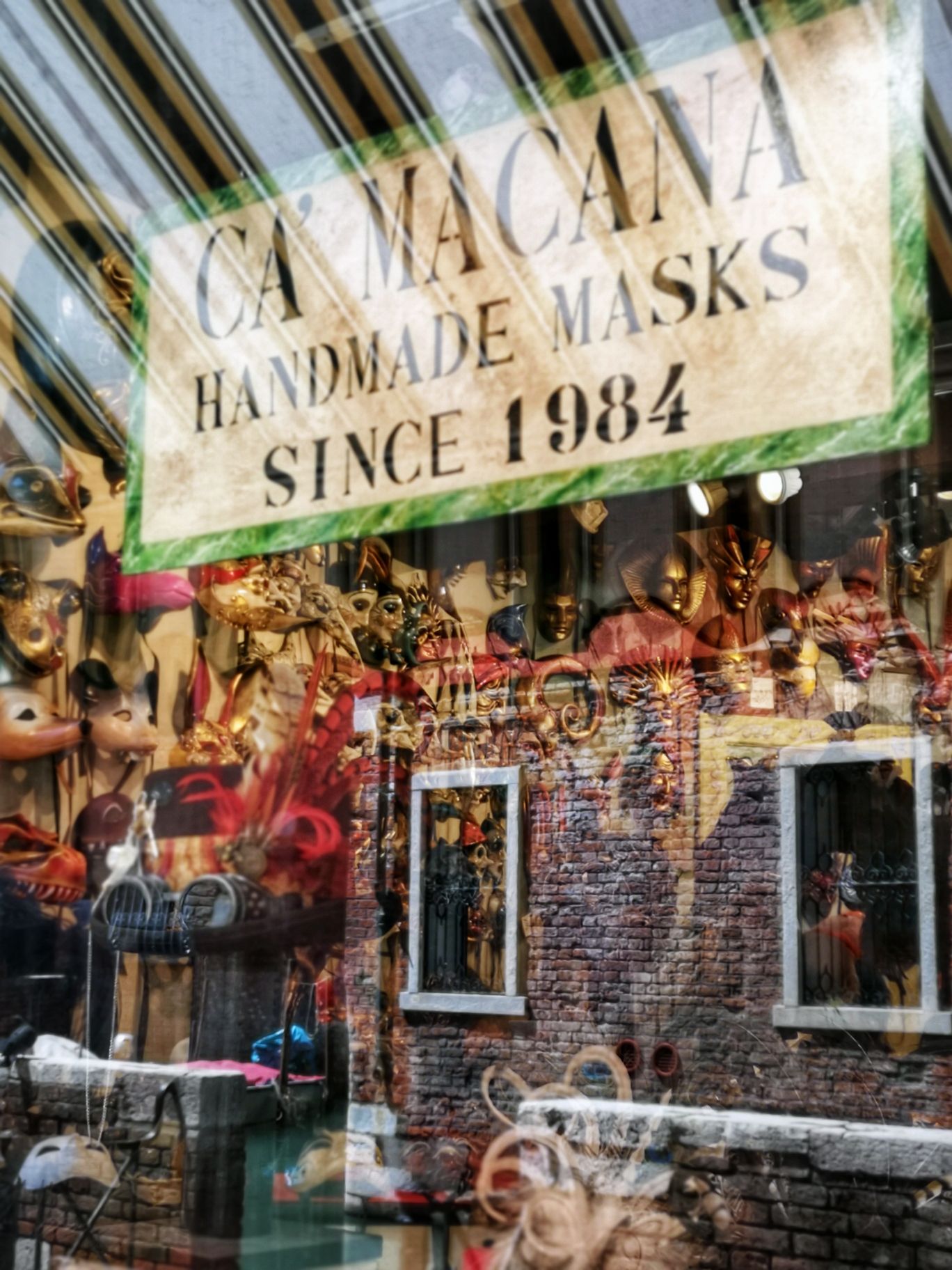
These days you sadly won't see locals strolling around in masks outside of the Carnival, but if you want to get in on the art of disguise yourself then visiting a mask-maker’s atelier is a must when you're in Venice. Maskmakers, known as mascherari in Italian, have historically enjoyed a prominent role in Venetian society, and the statutes of the maskmakers guild was drawn up as far back as the year 1436. Ignore the touristy shops and stalls near Venice’s main landmarks and instead go off the beaten path to find a quality artisan mask at one of our favourite boutiques: try Ca del Sol, Ca Macana Atelier Marega or La Gioia, each of which can lay claim to being the best mask shop in Venice.
What events do I need to look out for during Carnival Venice?

There is plenty going on throughout the Venice Carnival, and much of the fun of the festival is to be found in wandering the streets and soaking up the atmosphere. There are however a number of spectacular special events to look out for that take place at the weekends.
The Opening Parade

The unmissable opening ceremony of the Venice Carnival on Saturday February 4th centres on a spectacular floating stage featuring masked performers, dancers, acrobats and musicians scudding down the Grand Canal from Santa Lucia train station to St. Mark’s basin. For a sneak-preview of what to expect, check out the official trailer here.
The Festival of the 12 Maries
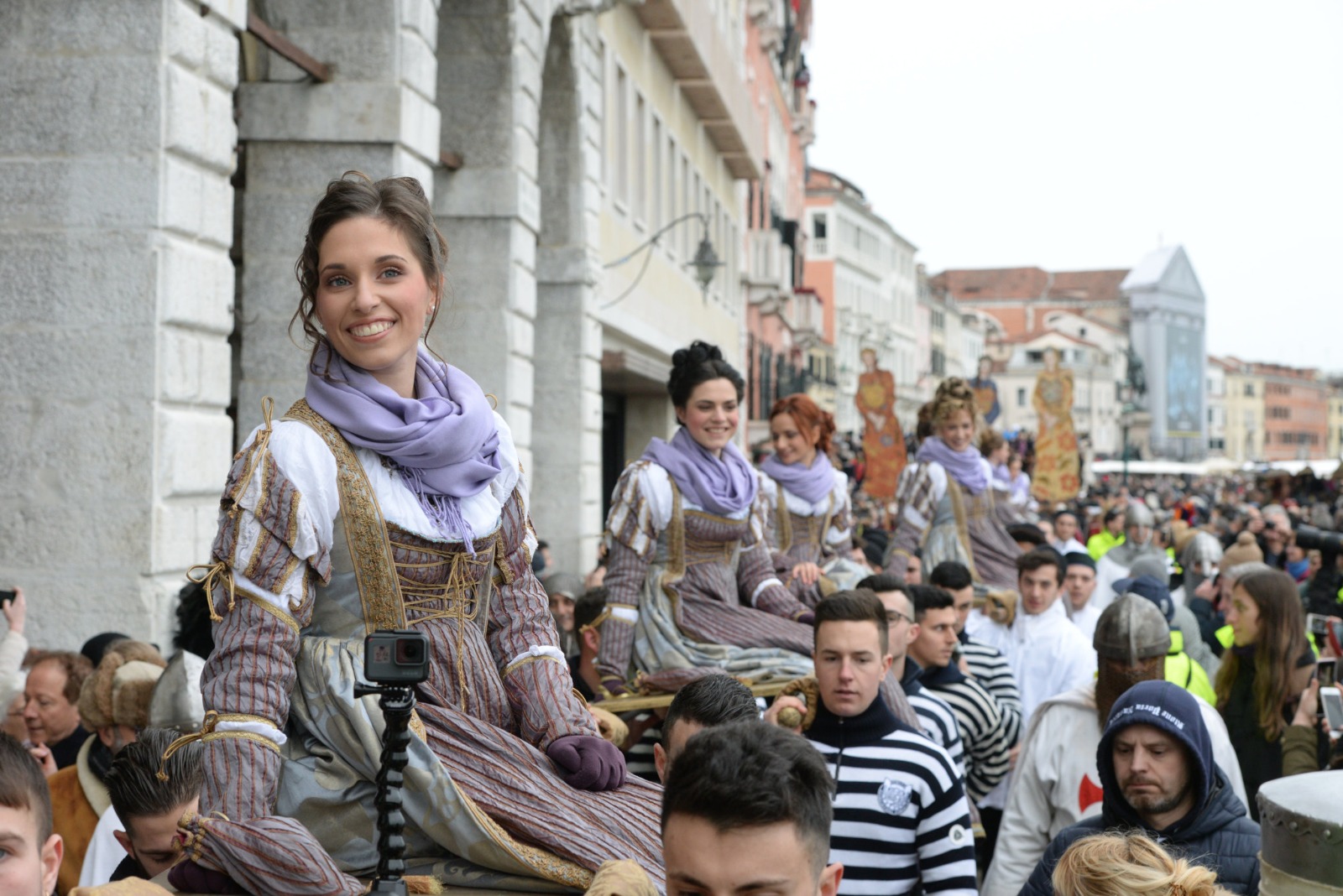
The Festival of the 12 Marias recalls a daring rescue of local Venetian women who were kidnapped by Istrian pirates in the 10th century. According to Venetian tradition, on the feast of the purification of the Virgin Mary (February 2nd) young couples planning to get married within the year would be blessed by the city’s Patriarch. In a show of solidarity, custom dictated that girls from poor families were lent precious jewels, dresses and finery by the nobility so that they wouldn’t be outshone during the ceremony.
During one of these celebrations, the young women in search of their matrimonial blessing were kidnapped by raiders. The brave Venetians fought off the intruders and rescued the girls, and the city celebrates the event with this festival on Saturday February 11th, when 12 young women in historical costumes are selected to parade through the city in a lavish procession. The winner will be selected in Saint Mark’s Square at the conclusion of the Carnival on Tuesday February 21st.
Through Eternity Tours offer a range of expert led Venice small group tours and private itineraries, from tours of Saint Mark’s basilica and the Doge’s Palace to off-the-beaten track sites and visits to the islands of the Venetian lagoon. Check out our Venice tours page for more, and get planning your perfect trip to the Floating City!
